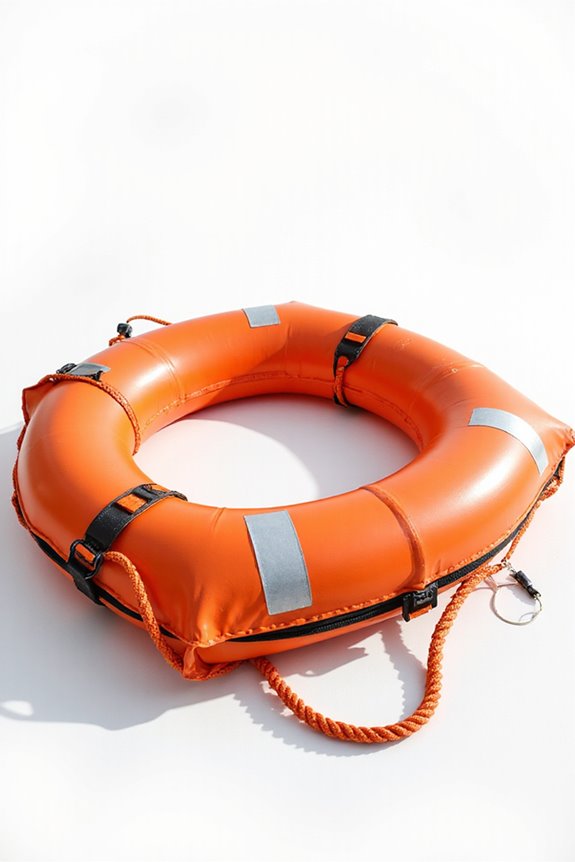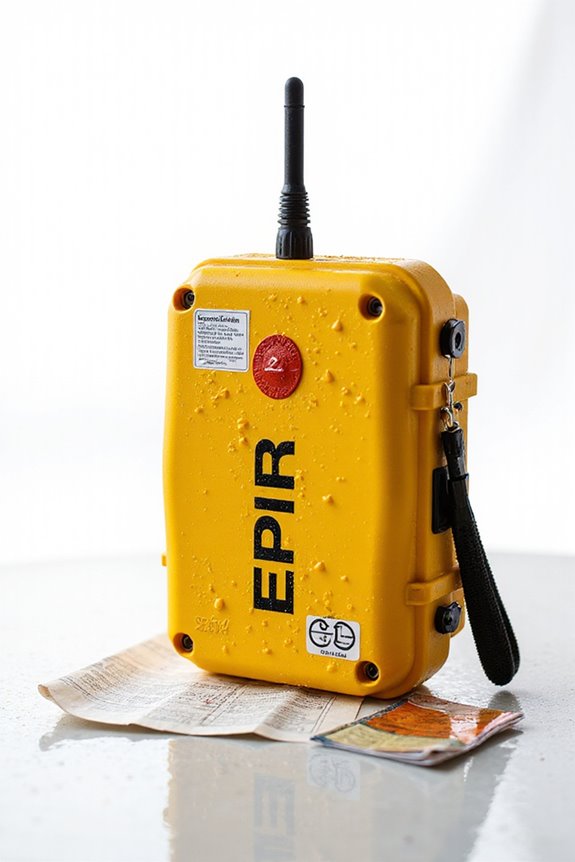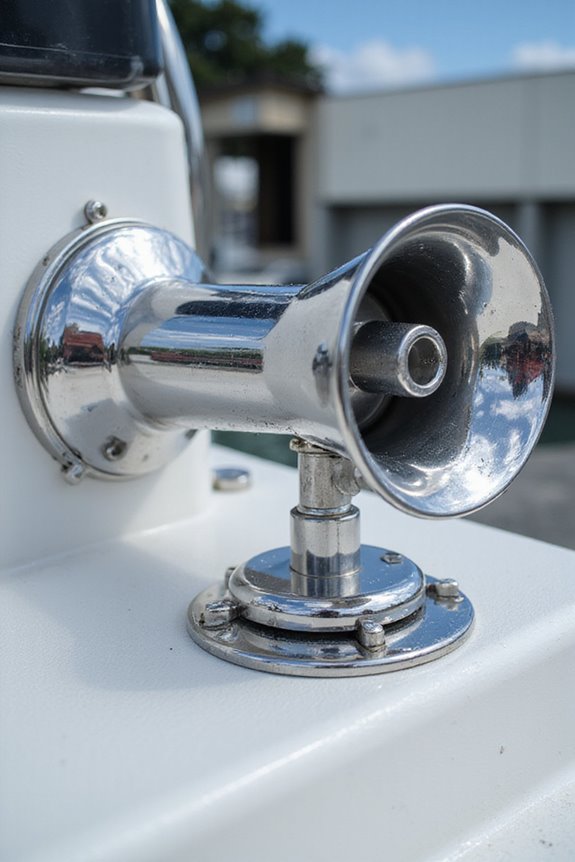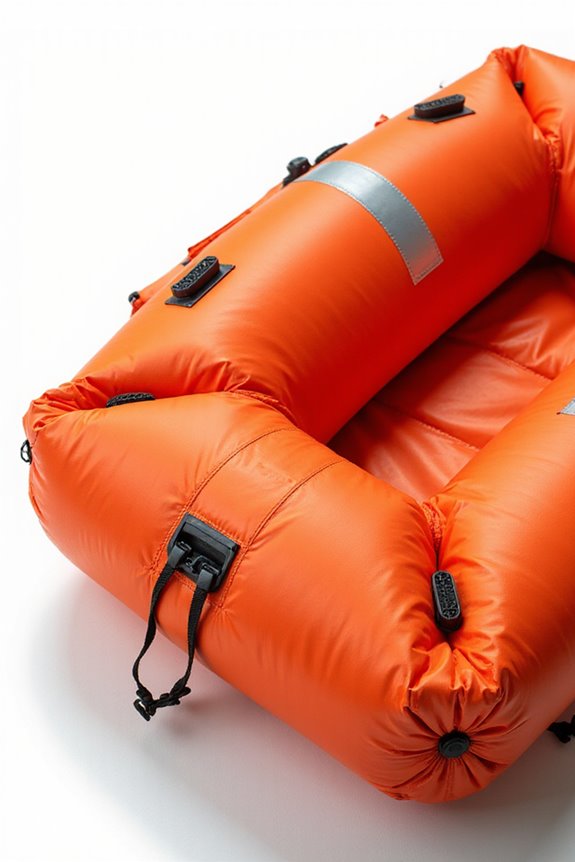When we talk about rescue tube flexibility, we mean tubes that bend easily but still hold strong when you’re pulling in a panicked swimmer—no one wants a tube snapping like a twig! This balance comes from smart materials like vinyl-coated foam that stay soft and buoyant, plus ergonomic grips and adjustable straps for quick, comfy handling. It’s about combining durability with the right weight and shape to glide smoothly in different waters. Stick around, and we’ll unpack why these design choices matter so much.
Key Takeaways
- Rescue tubes use vinyl-dipped foam and nylon mesh for durability and flexibility in various water conditions.
- Multiple foam layers with polyurethane coatings balance buoyancy and flexibility without adding bulk.
- UV stabilizers and antimicrobial treatments maintain tube pliability and freshness over time.
- Flexible designs with ergonomic grips improve handling and reduce user fatigue during rescues.
- Environmental factors like sun and saltwater affect tube flexibility, making material choice and maintenance critical.
Materials and Construction That Enhance Rescue Tube Flexibility
When it comes to rescue tubes, materials and construction aren’t just technical jargon—they’re the backbone of how flexible and effective these lifesaving tools can be. Together, we explore material combinations like vinyl-dipped Ensolite foam and nylon mesh, which balance softness and durability. Ever wondered how flexibility assessment works? It’s about testing these materials to guarantee the tube bends comfortably yet holds strong under pressure. Multiple layers—foam cores encased in polyurethane coatings—offer buoyancy without bulk, making the tube easier to handle. Plus, UV stabilizers and antimicrobial treatments aren’t just fancy add-ons; they keep the tube flexible and fresh through sun exposure and heavy use. By understanding these fine details, we can appreciate how design choices make rescue tubes adaptable across different water environments. Pretty neat, right?
How Design Features Improve Handling and Usability
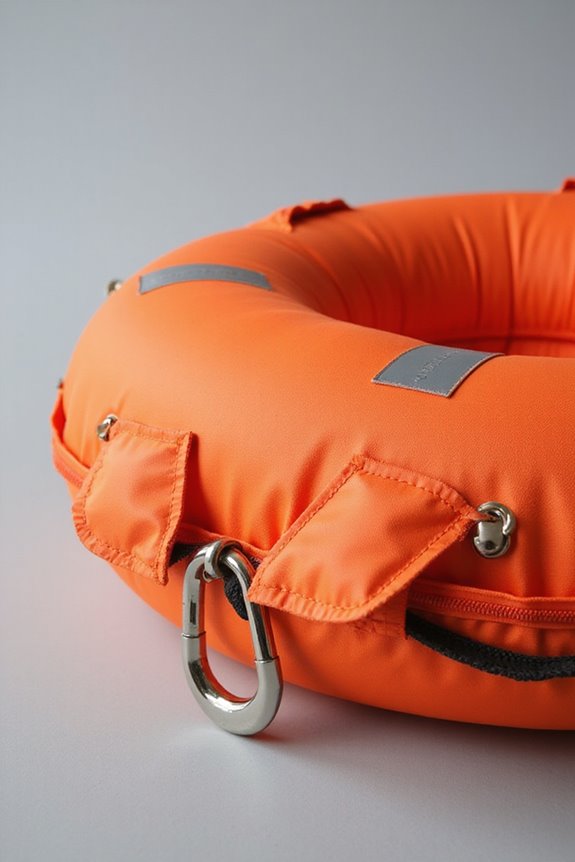
Lots of small design choices can make a huge difference in how a rescue tube feels and functions in real-life situations. For example, molded grips like LIFE GRIPS™ enhance the user experience by giving you secure handholds, making those tricky reach-assist moves easier without contact. We’ve gathered user feedback that praises adjustable straps for comfort—no one wants chafing during a rescue! Emergency release buckles also add peace of mind by allowing quick detachment when seconds count. Bright colors and reflective strips? They’re not just for style; they boost visibility, which is essential in chaotic water scenes. Plus, hydrophobic foam keeps tubes light and buoyant, reducing fatigue. These thoughtful design features come together to improve handling and usability, making every rescue attempt smoother and safer—because every second really matters, right?
Impact of Dimensions on Rescue Tube Maneuverability
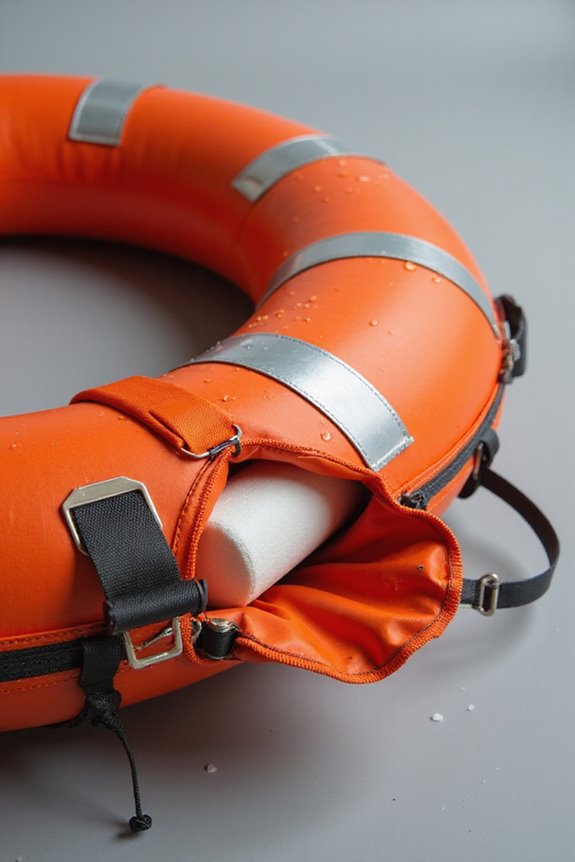
Since every rescue situation demands quick action, understanding how the dimensions of a rescue tube affect its maneuverability is vital. Have you ever wondered how tube length impacts your speed and control? Longer tubes, around 40 inches, offer great buoyancy but can increase water resistance, or drag, making quick turns trickier. That’s where drag reduction comes in—design features like tapered ends help the tube slice through water more efficiently, improving your control. Meanwhile, the tube’s width and thickness add stability but might slow down sharp moves. It’s all about balance: too long or too wide, and you might struggle to maneuver; too short or thin, and buoyancy might suffer. Together, these details guarantee you glide smoothly during a rescue—because, let’s face it, every second counts.
Balancing Weight and Buoyancy for Optimal Performance
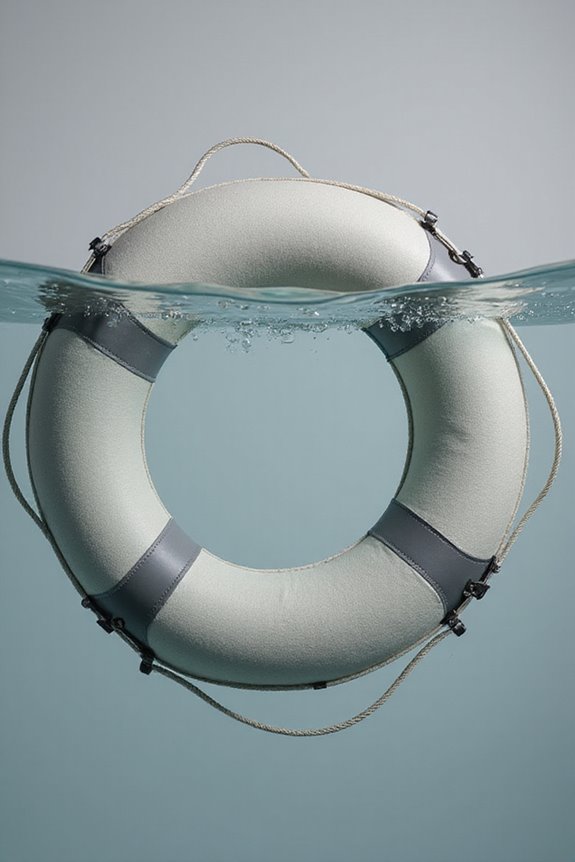
Although it might seem straightforward, balancing weight and buoyancy in a rescue tube is a bit of a juggling act—and one that can make all the difference in a high-stress rescue. We need to think about weight distribution carefully; too heavy, and it’s tough to maneuver, too light, and we might not get enough buoyancy when it’s needed most. Buoyancy adjustments come into play especially in varying water conditions—think calm lakes versus rushing rivers. That’s why materials like vinyl-coated foam are popular—they offer just the right mix of lightness and float. Plus, ergonomic designs help us handle the tube easily without wasting energy. So, next time you see one, remember it’s not just a float—it’s a carefully balanced life-saving tool that responds to real challenges on the water.
Durability Factors Affecting Long-Term Flexibility
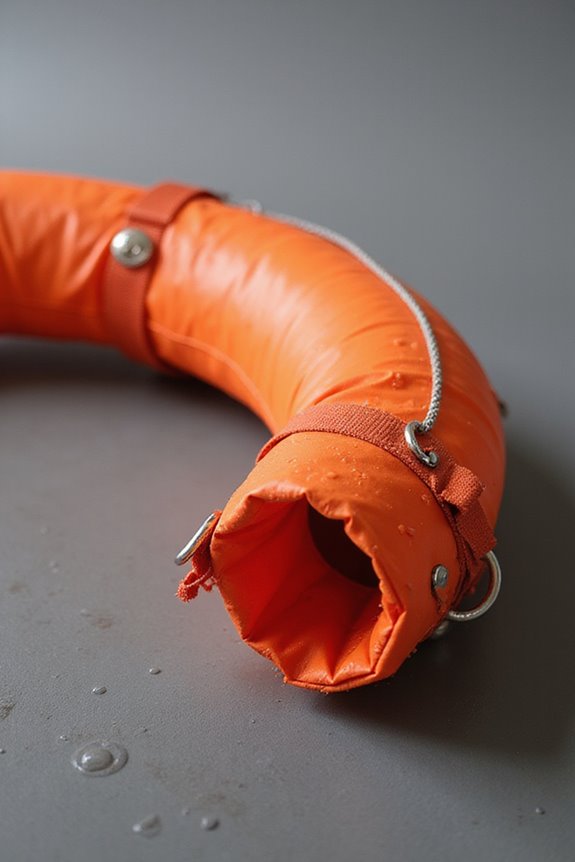
We’ve talked about getting the weight and buoyancy just right—that careful balance really shapes how well a rescue tube performs in the water. But have you thought about what keeps that flexibility going over time? Material aging naturally happens, as exposure to sun, saltwater, and temperature swings slowly stiffens the closed-cell foam inside. It’s kind of like how we get a little less springy after years in the sun! Environmental impact plays a big role here, too—humidity and harsh weather can sneakily reduce a tube’s pliability if it’s not designed with resilience in mind. That’s why choosing materials tested against these factors, like those meeting Australian Standard AS 2259, helps us count on consistent performance longer. Staying aware of durability keeps us safer and more confident out there.
Maintenance Tips to Preserve Rescue Tube Functionality
When we talk about keeping rescue tubes in top shape, regular maintenance is a game-changer that’s often overlooked. We’re all part of a boating community that relies on gear staying reliable, so routine inspections are critical. Checking for leaks, cuts, or valve issues guarantees the tubes won’t let us down when it counts. And don’t forget tube cleaning—using mild, biodegradable detergents keeps materials flexible and strong, avoiding harsh chemicals that sneakily wear things down. After saltwater exposure, a good rinse is our best friend to prevent corrosion and brittleness. Storing your rescue tube in a cool, shaded spot shields it from UV damage. Trust me, these simple habits extend the tube’s life and keep it ready for action, because who wants a limp rescue tube when safety’s on the line?
Versatility Across Different Water Rescue Environments
Since water rescue situations come in all shapes and sizes, it’s essential that rescue tubes and buoys can adapt to different environments—whether that’s a calm pool, choppy surf, or rushing river. Think about it: ocean conditions alone can vary wildly, so our rescue gear needs to keep up. From bright, weather-resistant tubes that handle saltwater and improve visibility, to compact, quick-inflation devices perfect for swift water, versatility is key. Our rescue training prepares us for all scenarios, but having equipment that works everywhere—poolside or in rough surf—makes life easier. Plus, features like long tow lines or emergency release buckles mean we’re ready for the unexpected. After all, isn’t it comforting to know our rescue tubes won’t quit on us no matter the water’s mood?
Importance of Ergonomic Grips and Strap Systems
Sure, we’ve talked about how rescue tubes need to handle all kinds of water environments—now let’s look closer at what really makes those tubes easier to use when the adrenaline’s pumping: their ergonomic grips and strap systems. You know that feeling when a grip just fits right, reducing hand cramps? That’s ergonomic benefits in action—molded grips perfectly shaped to our hands, offering grip comfort even when wet. Plus, shoulder straps designed with fixed sizes prevent annoying chafing, while quick-release buckles save precious seconds. These features help us stay confident and efficient during a rescue. It’s not just about holding on tight; it’s about doing so without tiring too fast or risking slips. After all, when lives depend on us, comfort and control aren’t luxuries—they’re lifesavers.
Regulatory Standards Influencing Rescue Tube Design
Although rescue tubes might seem straightforward, there’s a whole set of regulatory standards shaping their design to keep us safe out there. We all want gear that works when it counts, right? Regulatory compliance guarantees these tubes meet strict safety standards—like having multiple compartments so if one gets damaged, the others keep you afloat. Ever wondered why tubes have valves and clear markings? That’s part of safety requirements to prevent accidental deflation and keep us informed on capacity. Plus, features like rubbing strips and towing attachments aren’t just extras—they’re regulations designed for real-world scenarios. So, next time you grab a rescue tube, remember there’s serious science and rules behind its design to help us boat smarter and safer together.
Innovations Driving Advances in Rescue Tube Flexibility
When you think about rescue tubes, you might picture simple flotation devices, but today’s innovations have made them surprisingly flexible—both in shape and function. Thanks to foam innovations like hydrophobic foam that doesn’t soak up water, rescue tubes stay lightweight, durable, and ready when you need them. Flexible designs now include ergonomic grips and adjustable straps, meaning they fit lifeguards like a glove and can be quickly maneuvered during tense moments. Ever wonder how these improvements came about? Material tech advancements, like heavy-duty vinyl and polyethylene plastics, have boosted durability and weather resistance. So, whether it’s in calm lakes or rough surf, these tubes adapt and perform better, helping us stay safe and connected when it really counts. Pretty neat, right?
Frequently Asked Questions
How Do Rescue Tubes Perform in Freezing or Icy Water Conditions?
Did you know hypothermia can set in within minutes in icy water? Together, we rely on rescue tubes’ ice water performance—they offer stability, non-slip grips, and durability to combat these hypothermia risks and keep us safe.
Can Rescue Tubes Be Used Effectively by Solo Rescuers in Rough Seas?
We understand solo rescuer techniques become essential in rough seas challenges. Together, we can trust rescue tubes’ buoyancy and quick deployment, even when currents and waves test us, ensuring safety and support during tough solo water rescues.
What Training Is Recommended for Maximizing Rescue Tube Flexibility in Emergencies?
Back in the day, mastering rescue techniques through emergency drills is our best bet. Together, we’ll build confidence, refine skills, and create a close-knit team that’s ready to adapt and save lives when every second counts.
How Do Different Water Temperatures Affect Rescue Tube Material Flexibility?
It is understood material properties shift with temperature effects, causing rescue tubes to stiffen in cold water and become more flexible in warmth. Together, we adapt to these changes, ensuring safe, effective rescues no matter the water conditions.
Are There Environmental Impacts From Disposing of Old or Damaged Rescue Tubes?
Aren’t we responsible for protecting our waters? Old rescue tubes often face limited recycling options and create environmental risks. Let’s support stronger environmental regulations and embrace recycling together to keep our boating community eco-friendly and safe.

